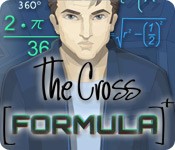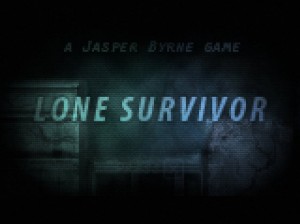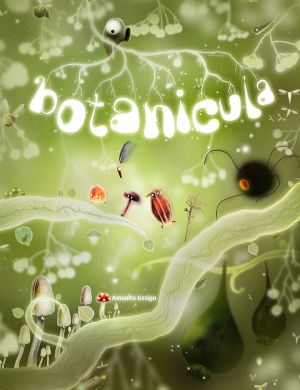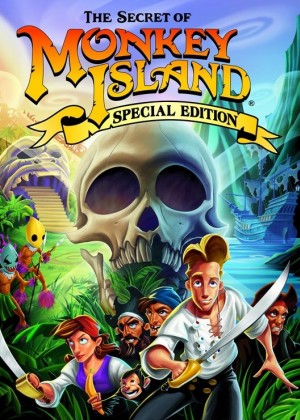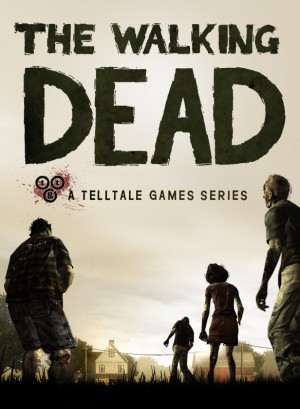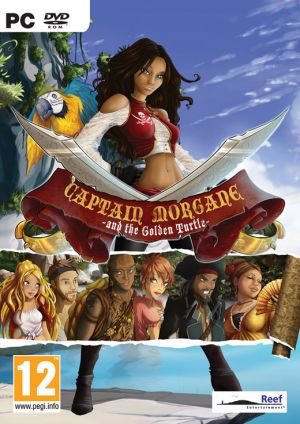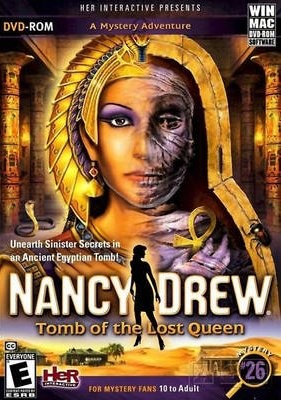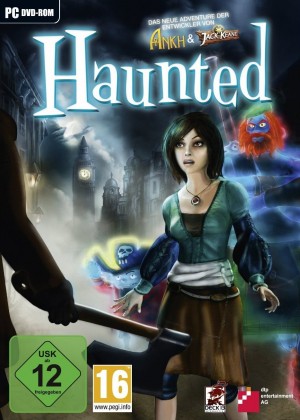Review for The Journey Down: Chapter One
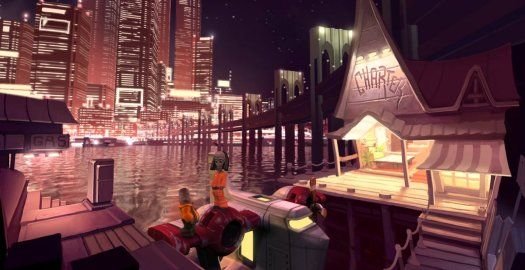
Could there be something in the air? A hint of reggae revolution perhaps? Just one month after the release of Bob Marley’s life story documentary, the launch of SkyGoblin’s African-inspired game The Journey Down: Chapter One makes an altogether timely appearance. Fusing together elements loosely based on African/ Jamaican culture with a scoop of sci-fi (slightly dystopian future-style) and a dash of Grim Fandango, the result is a delightful new(ish) adventure. Previously released as a freeware title, the enhanced remake of The Journey Down's debut instalment adds high quality visuals and beautifully detailed cartoon artwork, impressive new music, full voiceovers, and a collection of extra puzzles and scenes to an already impressive tale.
The adventure begins with our two heroes Bwana and Kito having a few problems with their aggressive and entirely uncharitable power company. Running a waterfront gas station and chartering business has its ups and downs (especially when your plane hasn’t flown in the last twenty years), leaving the boys unable to pay their bills. Now in darkness, they seek a creative way around the problem, with predictably disastrous results, so they'll need to find another source of funds to resolve their debts – and soon.
Meanwhile, a famous but discredited professor continues his search for information on the Underland, a place rumoured to exist over and below the edge of the world, which in recent times has become taboo, the mere mention of its name drawing the ire of the authorities and other interested parties. The professor believes the Underland is being covered up, and he and his assistant Lina are researching the possible reasons behind it. Recently they came across a reference to an important book that may be located at Kaonandodo’s Gas ‘n Charter. Unfortunately, their investigation has drawn the attention of a mysterious businessman who utilises some specialist members of his team (thugs) to tidy up his affairs. It seems he also has an interest in the book and will stop at nothing to retrieve it.
It’s at this point our story truly begins, as the crossroads of fate begin to intersect. Lina tracks down the book she was looking for at the Gas ‘n Charter, acutely aware that she has some goons on her trail and not much time up her sleeves. Bwana and Kito, on the other hand, have a spare plane and large debt to pay off. This seems like a perfect match, if only the boys can get various repairs done to the ship (just little details, like finding a new propeller, steering wheel and engines) and fly out of Kingsport Bay before the mobsters arrive.
This commercial remake of the first of four planned episodes is a slick, polished product that oozes quality and charm, though it doesn't progress the story very far. For the most part, the whole instalment is spent getting to know the main characters and building some background to the overall plot whilst searching for parts. You play as Bwana, a laid-back, unusual looking Jamaican-accented protagonist, whose face has been modelled on African tribal carvings and head masks. All the other character designs are as well, which gives each of them a highly distinctive look, with a unique personality to match.
Visually, The Journey Down is a delight to see in action. If you’ve played the freeware low resolution version, you’ll know how good the game looked in its original form, but the high definition update is truly impressive. Not only does it display skilfully painted and digitally edited backgrounds, it integrates a variety of 3D elements into each and every scene, like a moving conveyor belt carrying a series of cel-shaded panels. The effect is difficult to pull off, but here it's done superbly. Not every scene is perfect, as there are one or two areas that could have done with a little more polish, but on the whole the game looks remarkably lavish, imbued with a moody colour scheme of deep purple, red, black, brown and orange hues throughout.
You'll spend all your time in and around the waterfront, visiting such places as the docks, a nearby diner, an elevated tram-side kiosk, and a harboured ship. The most visually pleasing scene by far is the opening sequence, which begins with a view looking out over the night time skyline of the metropolis across the bay, the camera then gently drifting down to the Gas ‘n Charter. This looks great and gives the illusion of a much larger scope than the areas you'll actually visit. The characters are all composed of 3D models and look considerably better than their original 2D counterparts. Bwana, Kito and Lina are the most detailed models and are shown much closer up than the supporting cast, displaying a variety of facial detailing and patterns and elaborate costumes.
There is now also full voice acting, which generally delivers well performed Jamaican-type accents that perfectly complement the characters and make the game really stand out from the norm. The music is equally excellent, with a mixture of reggae, jazz and ambient tracks that vary from scene to scene, depending on the tone of each setting. The score is intelligently designed as well, knowing when to pull back on the music to create a feeling of emptiness and space when appropriate, then adding it back to enhance the mood or add vibrancy to a location. There are no tracks that merely loop throughout the whole game, and the atmosphere is constantly changing because of it. Sound effects are also clear and consistent, and everything works and sounds as it should.
The interface is very straightforward and easy to use. The left mouse button is used to activate any hotspot and will either give you a comment from Bwana or cause him to pick up or interact with an item. This one-button approach has likely been adopted with the Android and iOS releases in mind, but it works nicely on the PC too. Inventory is located in the lower part of the screen, displayed when you move the cursor over it. From here you click on items and either drag them onto the screen or other inventory objects to combine. In terms of accessibility, the game makes it easy to get into, but there is no hotspot highlighter or any in-game hint option if you get stuck. Neither is essential for play, however, as the game is fairly intuitive and objects are clearly visible.
The puzzles are both fun and engaging to solve without being too difficult. The vast majority are inventory-based, but there are a few logic puzzles such as rewiring a power grid. These are infrequent though, as Bwana comments periodically how much he dislikes puzzles. The obstacles themselves are well structured, though some can only be solved by experimenting with the environment. The objectives will challenge you at times, but are balanced well enough that they shouldn't trip you up for long. Although not overly complex, many of the puzzles are satisfying to complete, as they are creative and reward you with humorous results.
The relative ease of the puzzles does help make for a fairly short episode, however, even with the new scenes and locations. Had the story been extended a bit more or puzzle difficulty increased for a little extra challenge, we would be looking at one truly satisfy adventure. As it stands, the result is still very good, but it feels more like an extended prologue than a full quarter of an epic four-part adventure.
Despite its dark premise, the tone of Chapter One is consistently lighthearted, as befits the lead character's easygoing personality. The writing is amusing, and there’s plenty of commentary for relevant hotpots. Whilst the overall vibe feels Jamaican, the various personalities are more universal, making it easy to identify with both the heroes and the villains of the story. Both Bwana and Kito are likeable characters who seem to possess both innocence and mischievousness. Of the two, Kito appears to be more stable and earthy character, whilst Bwana is a bit more adventurous and free-spirited. Lina’s character shows intelligence and seriousness, but also a willingness to take a few risks in order to find out the truth and achieve her goals.
Though it really only sets the table for the larger adventure to come, already The Journey Down has shown itself to be the sort of game that only comes along every once in a while, and when it does, it reinvigorates your expectations of what can be done by an indie developer. The game reminds you why you love the genre in the first place, delivering interesting puzzles and beautiful visuals with distinctive voice acting and musical score. It feels like a golden era LucasArts game with a good dose of intrigue, excitement and humour, but with an entirely unique atmosphere all its own.
If you’ve played the original freeware version, you can expect more of the same but far more polished, and the improvements are well worth the price of admission. Don’t expect a great deal more, however, as the actual new content is a little short in supply. And if you've yet to play its lo-res predecessor, Chapter One is a great first episode in its own right. It only takes about 3-5 hours to complete, and ends with the feeling that the real game has only just begun, but in this case the reward is not in the destination, but in The Journey Down itself.
WHERE CAN I DOWNLOAD The Journey Down: Chapter One
The Journey Down: Chapter One is available at:
- GOG
- Itch.io -40%
- HumbleBundle
Our Verdict:
Though only teasing the series’ larger story arc for now, The Journey Down‘s HD remake is a short but vibrant indie adventure that far exceeds the quality of many full-blown retail games.









